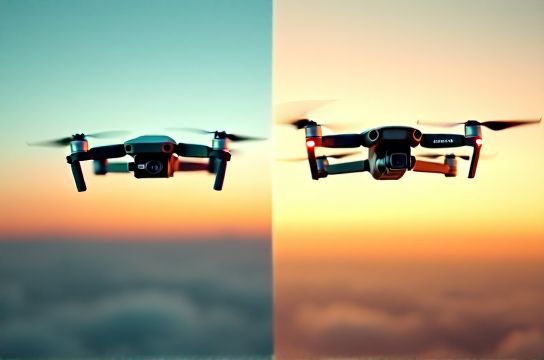Drone Flight Time Showdown Entry Level vs Pro Models
- 时间:
- 浏览:22
- 来源:OrientDeck
So you're in the market for a drone—awesome choice! Whether you're capturing epic sunsets, filming action sports, or just vibing with aerial photography, one question keeps buzzing: how long can it actually stay in the air? Let’s cut through the marketing fluff and dive into the real deal—drone flight time, comparing entry-level models to their pro-grade cousins.

Why Flight Time Matters (More Than You Think)
Flight time isn’t just about how many minutes you’re airborne—it affects your creativity, planning, and even battery budget. A 5-minute difference can mean missing the perfect golden hour shot or needing to carry three extra batteries instead of one.
The Great Divide: Entry-Level vs Pro Drones
Let’s break it down. Entry-level drones usually cost under $500 and are designed for beginners. Pros? They can run over $2,000 and come packed with sensors, obstacle avoidance, and cinema-grade cameras.
But what about flight time? Here's a side-by-side comparison:
| Drone Model | Type | Avg Flight Time (min) | Battery Capacity (mAh) | Price Range (USD) |
|---|---|---|---|---|
| DJI Mini 3 | Entry-Level | 34 | 2453 | $469 |
| Autel EVO Nano+ | Entry-Level | 28 | 2750 | $699 |
| Parrot Anafi | Mid-Range | 25 | 2700 | $699 |
| DJI Mavic 3 Pro | Pro | 46 | 5000 | $2,199 |
| Autel EVO II Dual 640T | Pro | 40 | 7100 | $2,695 |
As you can see, pro drones don’t just fly longer—they’re engineered for endurance. The DJI Mavic 3 Pro soars for 46 minutes, thanks to its massive 5000mAh battery and aerodynamic design. Meanwhile, most entry-level drones hover around the 25–35 minute mark.
But Wait—Real-World vs Advertised Time
Manufacturers test flight times in perfect conditions: no wind, constant altitude, and gentle maneuvers. In reality? You’ll likely lose 5–10 minutes due to wind, video transmission, and aggressive flying.
- Entry-level tip: Always carry at least 2 extra batteries.
- Pro tip: Use eco mode and avoid rapid ascents to squeeze out extra minutes.
What’s Driving the Difference?
It’s not just battery size. Pro drones use smarter power management, lighter carbon fiber frames, and more efficient motors. For example, the Mavic 3 Pro’s propulsion system is 18% more efficient than the Mini 3’s—even though it’s heavier.
The Verdict: Is Longer Flight Time Worth It?
If you’re a hobbyist snapping weekend shots, an entry-level drone with 30+ minutes is plenty. But if you’re doing professional mapping, inspections, or cinematic work, every extra minute counts—and pros deliver.
Bottom line: pro drones offer 30–50% longer flight times, better efficiency, and fewer battery swaps. That’s not just convenience—it’s productivity.
So next time you’re comparing drones, don’t just look at the camera specs. Ask: how long can it really fly?